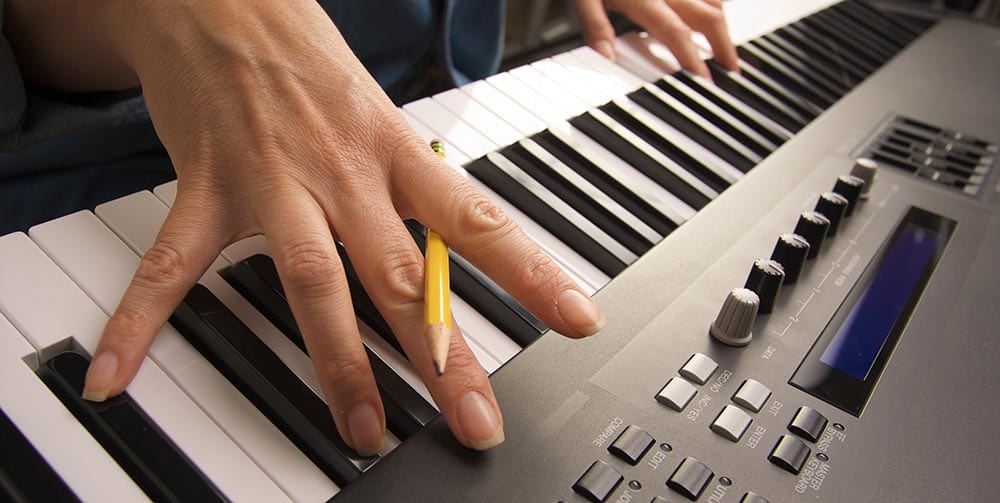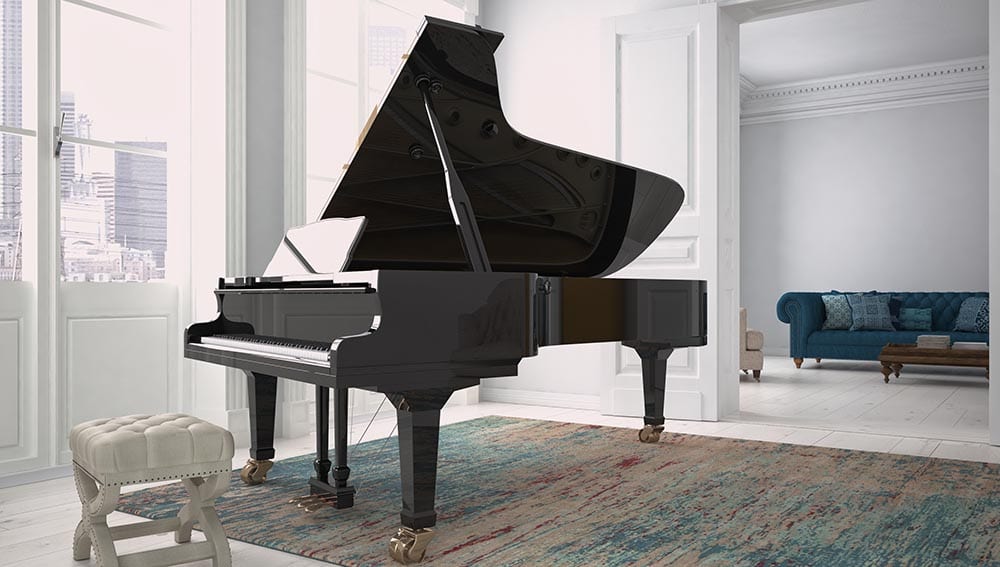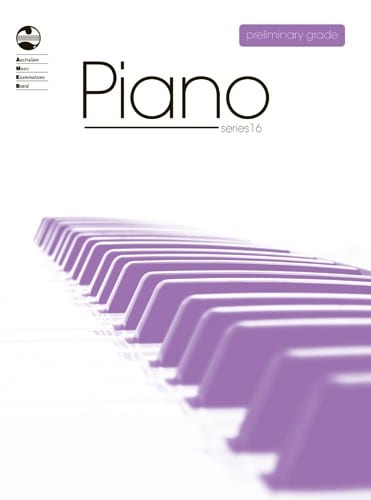Tuning your own piano is a big job and one best undertaken by a professional. However, not everyone can afford or get access to a good piano tuner, so we have created this guide to follow if you do decide to do it yourself. Make sure you follow all instructions properly to avoid injury or damage to your piano.
Get the Right Tools
There are some essential tools and equipment you will need to tune your piano. These are:
- A tuning lever
- One or more wedges to mute strings
- An accurate pitch reference such as a tuning fork, electronic tuner, or even a smartphone tuning app.
Tuning the Piano: Step by Step
This step by step guide will walk you through the complex process of tuning your piano. Be sure you follow every step to the letter, and if you are unsure of what to do at any point, don’t improvise – call a professional for advice.
- First, remove the piano’s external panels.
- You’ll see that in the mid-treble range there are 3 strings to each note, whereas in the bass section there are only two or one. You’ll need to use a wedge to mute the strings so that you can tune one on its own first, and then tune the others to match it.
- Begin the tuning by comparing a mid-treble note to the pitch of a standard tuning fork – generally top C or middle A are used.
- Once this note is adjusted correctly with the tuning lever, use it as a reference to start tuning other strings. Start with octaves, then 5ths, then 4ths, then the major 3rd. For example, once you’ve tuned top C to a standard C tuning fork, you can use top C to tune middle C, then use middle C to tune the note one 5th above (middle G), then use middle G (G4) to tune G3, use G3 to tune D4, use D4 to tune D3, use D3 to tune A3, and so on.
- As you tune, check major third intervals. Once your middle C and the E above it are tuned, for example, check to see that the major third between them sounds right.
- Once you are satisfied with the tuning of the mid-treble range, the rest of the piano can be tuned relative to it using ascending and descending intervals of an octave.
- Give the piano a check once you are done using your ears and a pitch reference. Octaves around the bass-treble break-point are especially important – make sure none of the unisons have moved.
- Once you’re done, put the outer panels back on to protect the delicate mechanisms inside the piano and you should be ready to play.
Take Your Time
Don’t rush your tuning and expect it to be a huge time commitment. Beginners can expect to work for 1-5 days to get a piano in tune; even professionals can spend up to 5 hours on a single instrument.
Pitfalls
Though it is possible to tune a piano yourself, there are many good reasons you should choose a professional if you can. For one thing, professional tuners have specially trained ears and can hear things while tuning you probably can’t, so it will be harder for you to succeed. More importantly, home tuning runs the risk of broken strings, bent or loosened pins, and more – such damage to pianos is very expensive to repair.
If you are in the Sydney area, get in touch with the professionals at Pianoforte and we can tune your piano accurately and safely. Call us on 02 9411 8911.



 July 7, 2016
July 7, 2016




